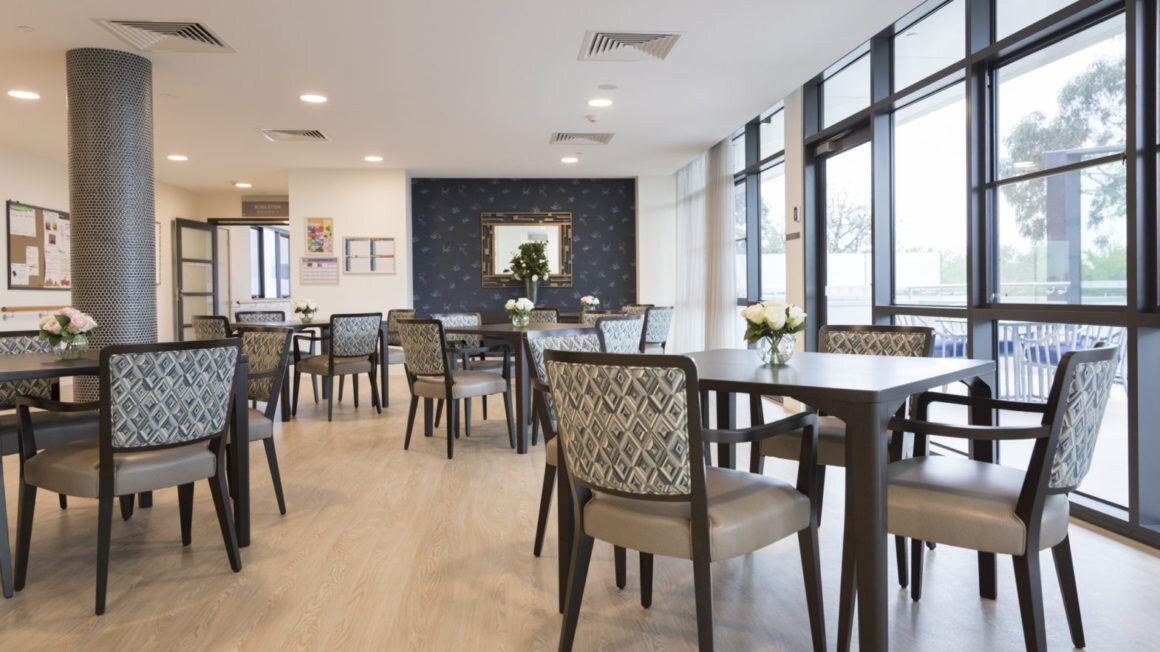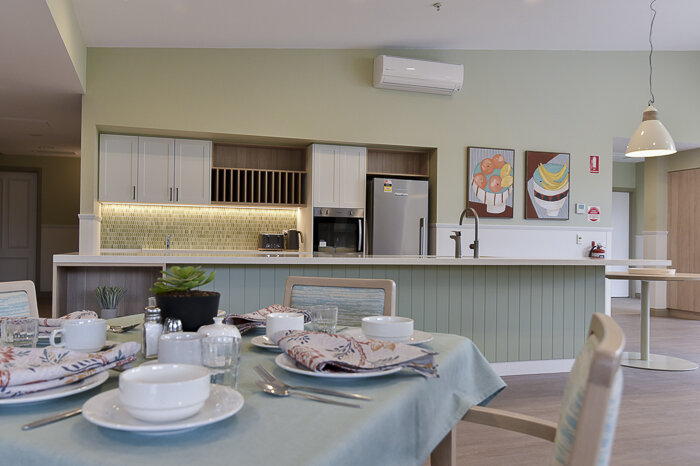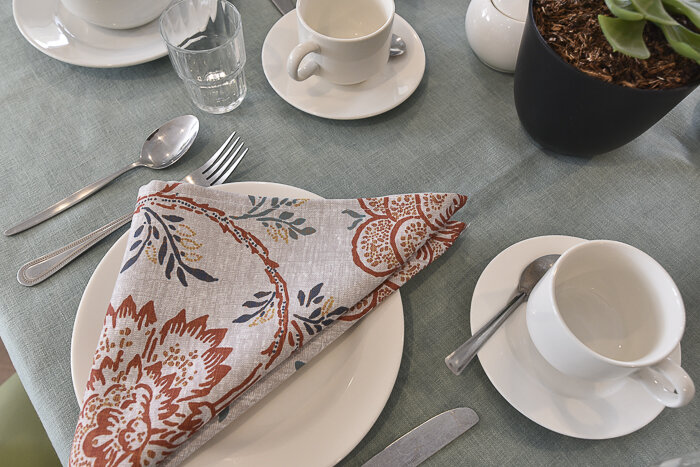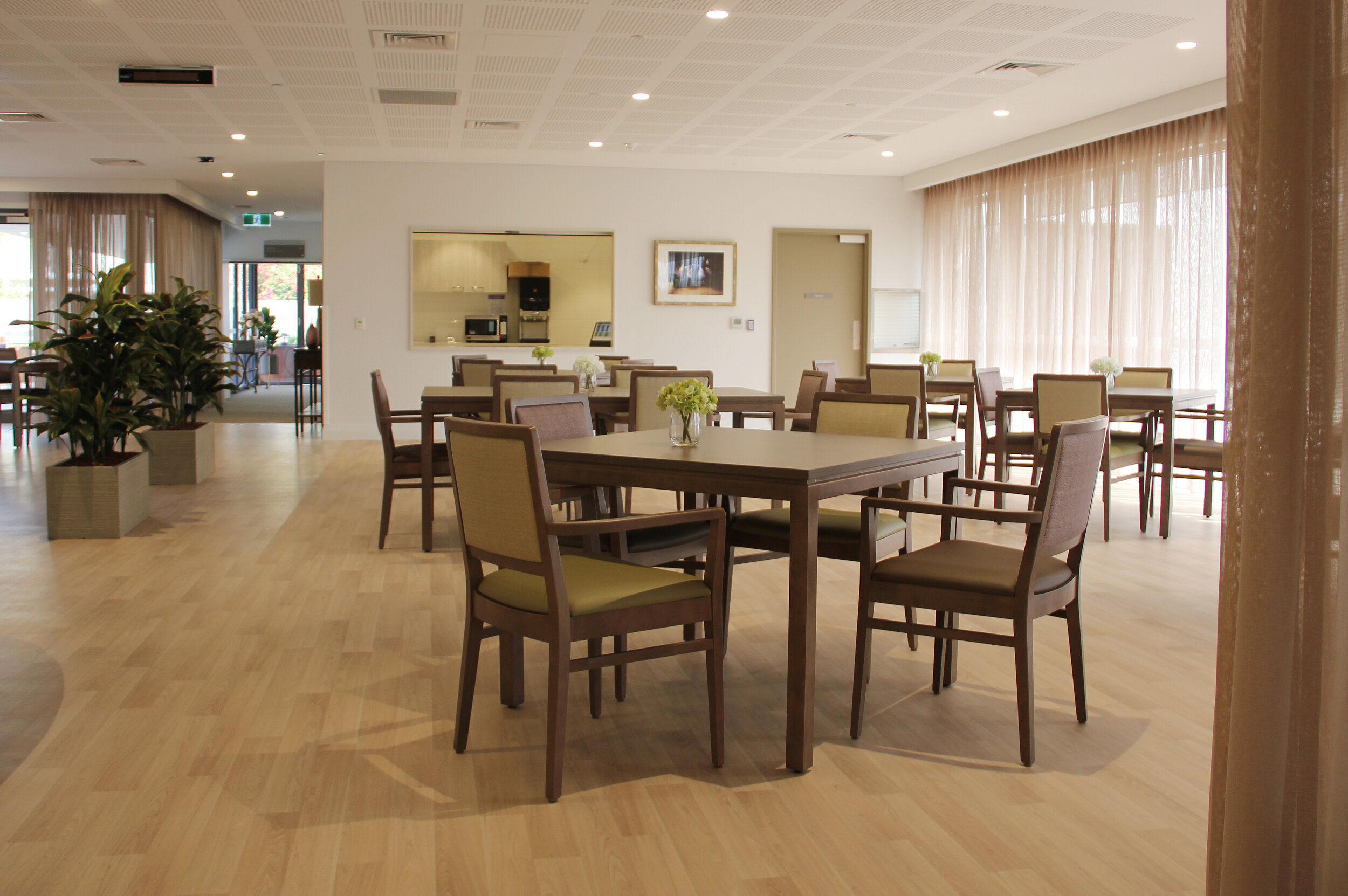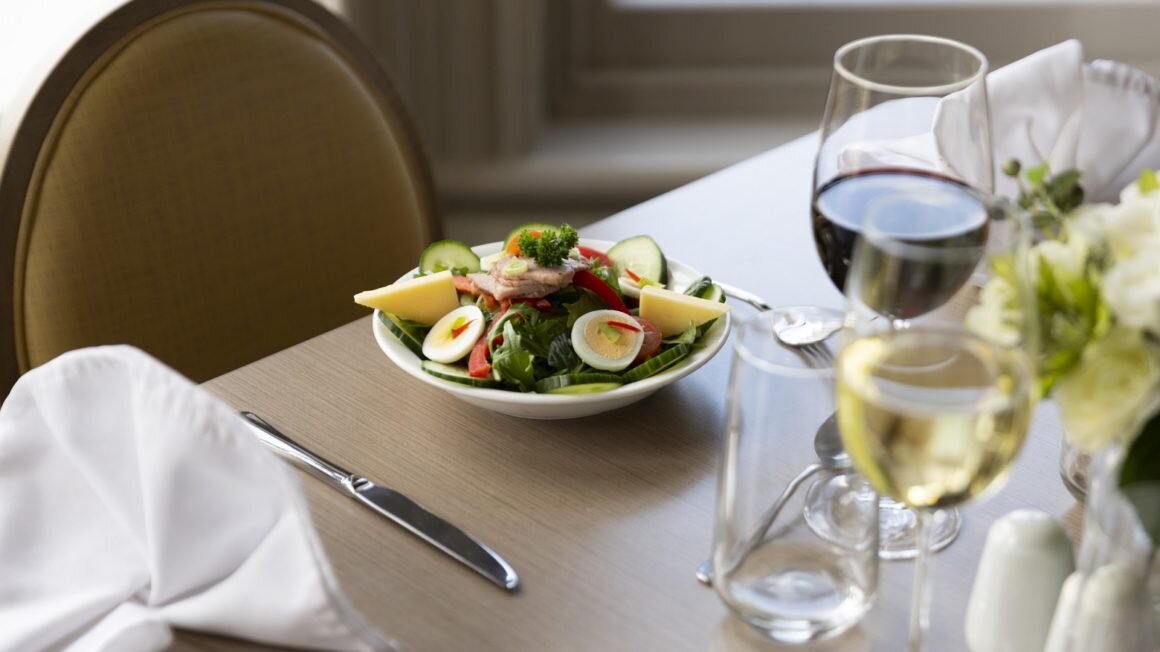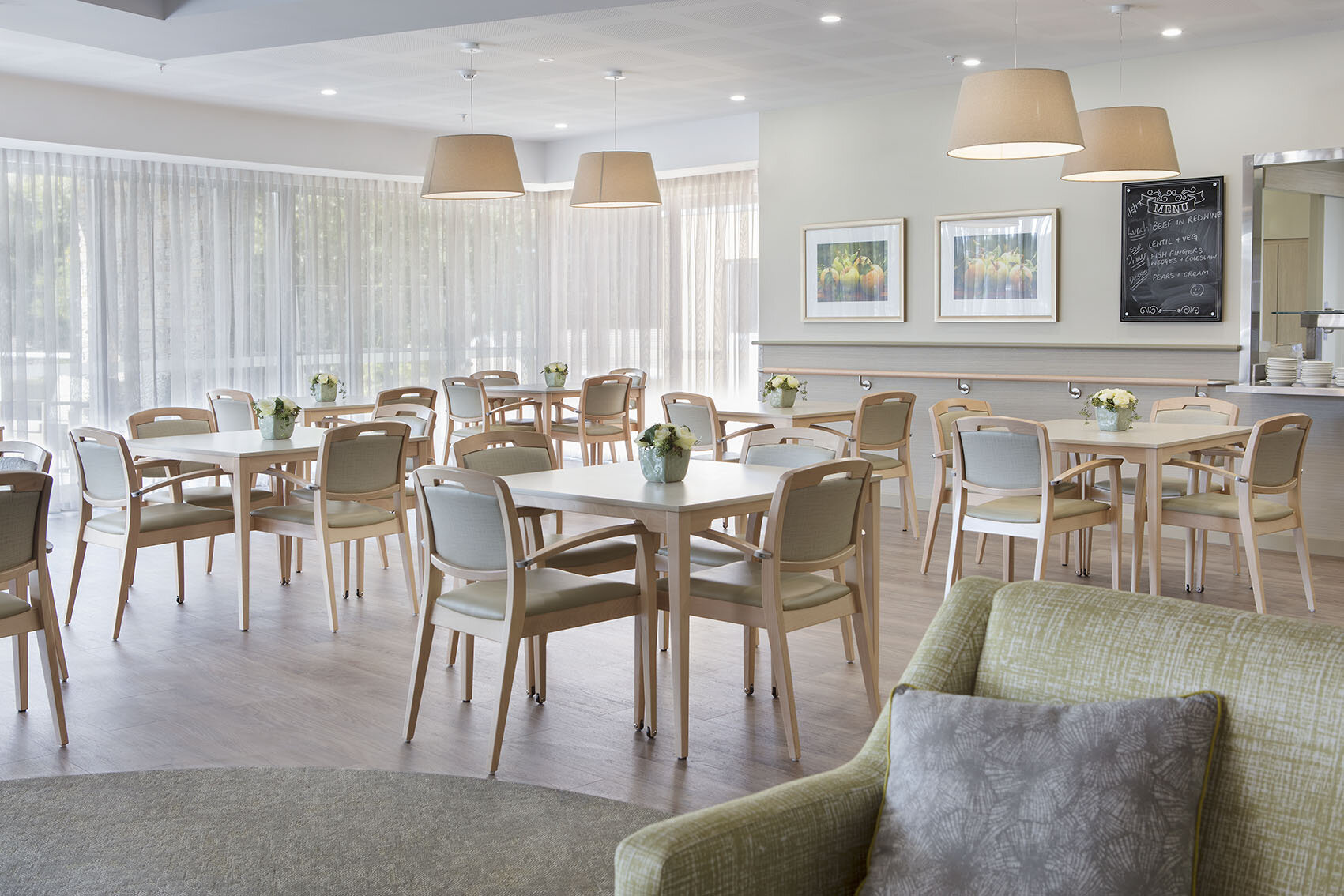Setting the Scene at Mealtimes
The environment has a role to play too4. Meal planning is directly connected with Aged Care Quality Standard 45.
There are ways that you can improve nutrition and intake in the elderly:
1. Dietary approaches which may include food fortification and supplements as needed3.
2. Enhance the physical environment with particular attention to increasing lighting and reducing noise4.
3. Provision of assistance which may include prompts, appropriate set up through to full support6.
4. Awareness of foods to avoid and foods to embrace2,7.
5. Presentation of food to increase visual appeal8.
See below for some of the amazing mealtime area transformations that we have recently completed:
Images Courtesy of Regis
If you want to know more about your resident’s perceptions of their mealtime experiences, click here to access Research Institute for Ageing’s short 14 question tool to help you understand residents’ satisfaction and identify possible opportunity areas.
References
1. Abbey, K.L., Wright, O.R., and Capra, S. (2015). Menu planning in residential aged care-The level of choice and quality of planning of meals available to residents. Nutrients, 7(9), pages
2. Rossi, A. (2017). Older People at Disproportionate risk of Malnutrition, Aged Care Guide. Retrieved from https://www.agedcareguide.com.au/talking-aged-care/older-people-are-often-at-disproportionate-risk-of-malnutrition
3. Iuliano-Burns, S. (2019) Malnutrition in the Older Adult, Ausmed. Retrieved from https://www.ausmed.com/cpd/courses/older-malnutrition.
4. McDaniel, J., Hunt, A., Hackes, B. and Pope, J.F. (2001). Impact of dining room environment on nutritional intake of Alzheimer’s residents: A case study. American Journal of Alzheimer s Disease and Other Dementias, 16(5), 297-302. Doi: 10.1177/153331750101600508
5. Aged Care Quality Guidelines: https://www.agedcarequality.gov.au/providers/standards.
6. Research Institute for Ageing. (2013). Mealtime Satisfaction Questionnaire. Retrieved from https://the-ria.ca/resources/mealtime-satisfaction-questionnaire/
7. Eat Well Nutrition 2014, Educational Video 4: Feeding Assistance, online video. Retrieved from https://www.eatwellnutrition.com.au/2014/09/10/educational-video-4-feeding-assistance/.
8. Better Health Channel (2017). Nutrition Needs When You’re Over 65. Retrieved from https://www.betterhealth.vic.gov.au/health/healthyliving/Nutrition-needs-when-youre-over-65
9. Leading Nutrition (2017) What Makes a Great Aged Care Menu. Retrieved from https://www.leadingnutrition.com.au/makes-great-aged-care-menu/


